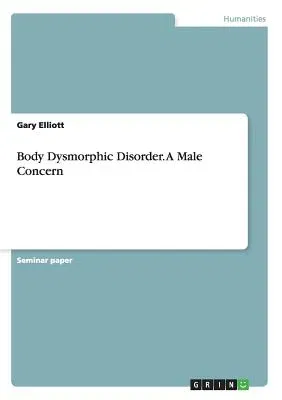Seminar paper from the year 2010 in the subject Psychology -
Miscellaneous, ( Atlantic International University ), language: English,
abstract: Body Dysmorphic Disorder (BDD) is 'a psychiatric illness in
which patients become obsessively preoccupied with perceived flaws in
their appearance' (Luciano 2002: p175). Martin & Costello (2008) view it
is a severe dislike and concern about some slight or imagined aspect of
their appearance, that causes them significant emotional distress and
difficulties. Cash (2008) maintains that sufferers have 'a grossly
distorted view of what they look like' and Phillips (2005) coins BDD as
'the disorder of imagined ugliness' (p5). Body Dysmorphic Disorder is
classified as a somatoform disorder because the primary focus is a
psychological preoccupation with a somatic issue. (Barlow & Durand:
2005) Thompson (2000) explains that the term that preceded Body
Dysmorphic Disorder was 'dysmorphophobia' which was used by Morselli in
1886 (Morselli, 1886) which literally meant a 'fear of ugliness'. In
1903, Janet's description referred to an 'obsession with shame of the
body'; for decades BDD was thought to represent a 'psychotic delusional
state' (Barlow & Durand: 2005, p183). The first English language paper
on dysmorphophobia was not published until 1970 (Hay: 1970) focusing on
the fear of other people's reactions to the imagined flaw in appearance.
BDD gained official status in 1987 when it was first published in the
DSM-III-R Jim was convinced that everyone, even his good friends, was
staring at a part of his body that he himself found absolutely
grotesque. He reported that strangers would never mention his deformity
and his friends felt too sorry for him to mention it. Jim thought his
head was square! Jim could not imagine people getting past the fact that
his head was square. To hide his condition as well as he could, Jim wore
soft floppy hats and was most comfortable in winter, when he could all
but completely cover his hea


